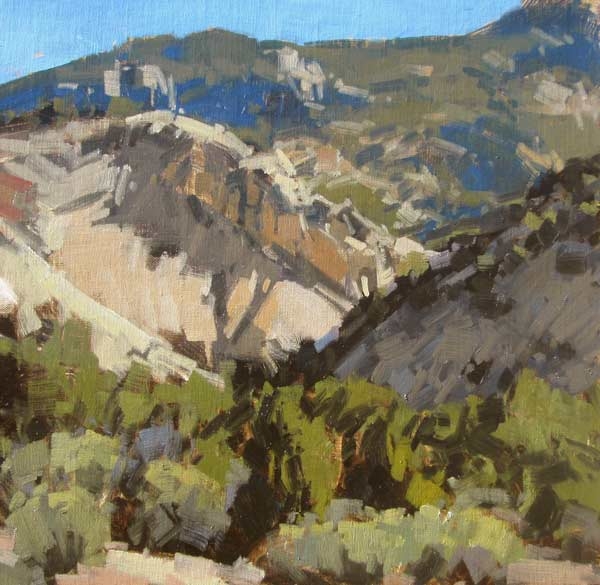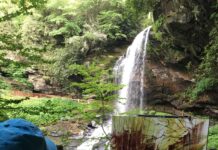
In this new series of articles, Utah artist J. Brad Holt talks about what artists are seeing as they look at the landscape. Holt studied geology in college and is attentive to what the rocks suggest in the scenes he paints.
I recently saw a painting in a gallery of this group of white shale hills in Cedar Canyon, done by a good friend of mine. It was a nice piece, but I was dismayed when I saw a reference to ash hills in the title. These are shales and mudstones laid down in rivers and shallow seas during the Jurassic period. I know that they superficially resemble certain deposits of volcanic ash in color and habit of erosion, but there are no igneous rocks exposed in this part of the canyon. I don’t mean to suggest that landscape artists need to study geology in order to avoid the occasional titling error, or that failure to understand the science behind the landforms will result in an inability to render them artfully. My point is that we might wish to deepen our appreciation of the subject to which we are dedicating our artistic lives.
Artists and poets and scientists have something in common. We are sensitive observers of nature. We go to nature with a higher purpose, and if we are asked why we do so, most of us would respond that we love the land we paint. That’s good. And part of loving something is learning more about it. It was suggested to me that I write a series of articles on “What Artists Need to Know About Geology.” But I think that is a bit presumptuous. I don’t think artists really need to know anything about their subjects, except what they observe. I do, however, know that there is much that we want to know, because we are curious and intelligent people!

“Mule Ears Diatreme,” by J. Brad Holt, 2015, oil, 9 x 12 in. Classroom demo
A few weeks ago, a student of mine was struggling with a painting project. When she showed me her reference photo, I recognized it as the Mule Ears Diatreme, near the San Juan River in Southeastern Utah. The Diatreme is a fairly rare intrusive igneous body from a deeply placed magma source. I have been there, and I have collected some of the flawless little red pyrope garnet crystals that occasionally weather from the formation. Thus intrigued, I offered to paint a demo to show how I would handle the scene. So here, at least, is one case where an interest in geology becomes the prime genesis for a piece of art.
I hope that over the next several weeks I can show numerous instances where art and the earth sciences cross paths. We will look at the early scientific explorations of the American West, and the artists those expeditions took with them. We will cover the basics of the science, without getting too technical. We will spend some time on geomorphology, the study of landforms, to discover what the look of the land tells us about its history. We will show the role plate-tectonics played in the genesis of many well-known landmarks. I’m excited about the series, and I hope that you will join me.




